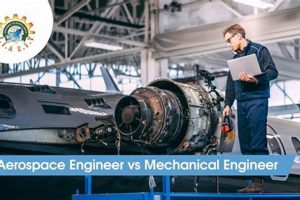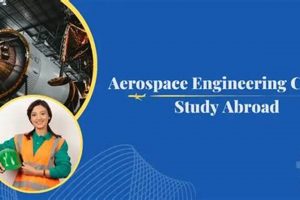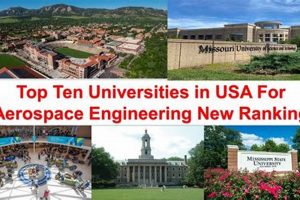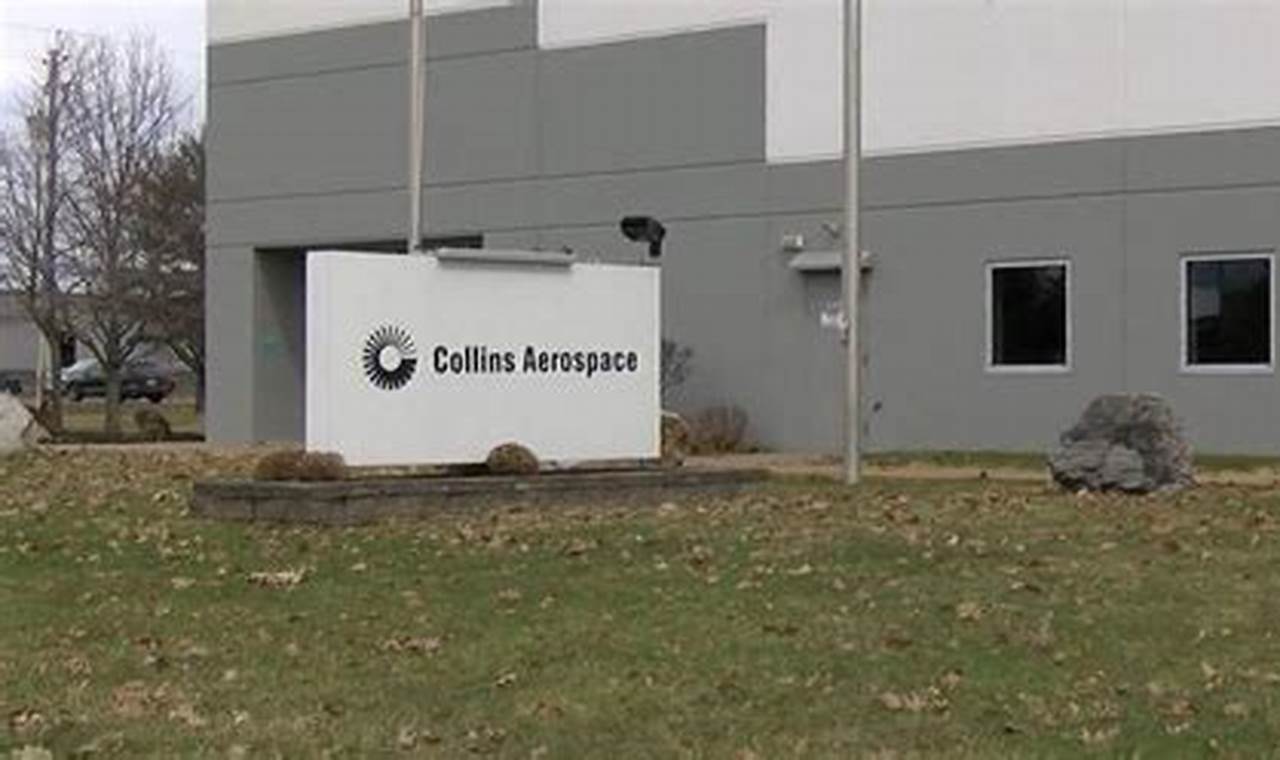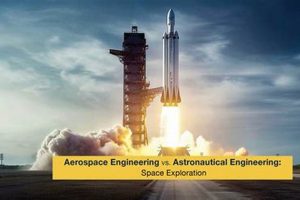The path to becoming an aerospace engineer demands a strong foundation in science and mathematics. A bachelor’s degree in aerospace engineering, or a closely related field like mechanical engineering, is typically the minimum educational requirement. Coursework emphasizes areas such as aerodynamics, propulsion, structures, materials science, and control systems. Furthermore, practical experience gained through internships or research projects is highly valued.
The rigorous academic preparation and hands-on experience equips aspiring aerospace engineers with the analytical and problem-solving skills necessary to design, develop, test, and supervise the manufacture of aircraft, spacecraft, and missiles. The profession plays a crucial role in advancing air travel, space exploration, and national defense. Historically, advancements in aerospace engineering have led to significant improvements in fuel efficiency, safety, and performance in both civilian and military applications.
Therefore, the subsequent sections will delve deeper into the specific educational qualifications, necessary skills, and career prospects associated with this challenging and rewarding engineering discipline. Emphasis will be placed on the professional certifications, required personal attributes, and the ever-evolving technological landscape that shapes the career trajectory of individuals in this field.
Guidance for Aspiring Aerospace Engineers
The following outlines practical guidance for individuals seeking a career in aerospace engineering, emphasizing critical areas for development and focus.
Tip 1: Prioritize a Strong STEM Foundation: Excellence in mathematics and physics is paramount. Dedicate significant effort to mastering calculus, differential equations, linear algebra, and fundamental physics principles. These concepts are foundational for subsequent aerospace engineering coursework.
Tip 2: Seek Relevant Extracurricular Activities: Participate in science and engineering clubs, robotics competitions, or model aircraft building. These activities provide practical experience and demonstrate a genuine interest in the field.
Tip 3: Obtain Internships in the Aerospace Industry: Secure internships with aerospace companies, research institutions, or government agencies. Internships provide invaluable real-world experience and networking opportunities.
Tip 4: Develop Proficiency in CAD Software: Computer-Aided Design (CAD) software skills are essential. Learn and practice using industry-standard CAD packages such as CATIA, SolidWorks, or AutoCAD.
Tip 5: Cultivate Strong Communication Skills: Effective communication is critical for collaborating with engineers and presenting technical information. Practice technical writing and public speaking to improve communication abilities.
Tip 6: Consider a Graduate Degree: A Master’s or Doctoral degree can significantly enhance career prospects, particularly for specialized roles in research and development.
Tip 7: Stay Current with Industry Trends: Aerospace engineering is a rapidly evolving field. Remain informed about new technologies, materials, and design approaches through journals, conferences, and professional organizations.
By focusing on these areas, aspiring aerospace engineers can enhance their skills, knowledge, and experience, increasing their chances of success in this competitive field. A proactive approach to academic and professional development is crucial.
The subsequent section will address the long-term career paths and opportunities available to qualified aerospace engineers, exploring both traditional and emerging roles within the industry.
1. Solid STEM foundation
A solid foundation in Science, Technology, Engineering, and Mathematics (STEM) is not merely beneficial, but fundamentally essential for aspiring aerospace engineers. It forms the bedrock upon which all subsequent aerospace-specific knowledge and skills are built, influencing an individual’s capacity to understand, analyze, and contribute to the field. The depth and breadth of this foundation directly correlate with an engineer’s ability to tackle complex problems and innovate effectively.
- Mathematical Proficiency
A deep understanding of calculus, differential equations, linear algebra, and statistics is critical. Aerospace engineering relies heavily on mathematical modeling and simulation. For instance, calculating the trajectory of a spacecraft or analyzing the aerodynamic forces on an aircraft wing requires advanced mathematical techniques. Inadequate mathematical preparation directly limits the engineer’s capacity to perform such essential tasks.
- Physics Principles
Aerospace engineering heavily relies on physics, especially mechanics, thermodynamics, and electromagnetism. The design of propulsion systems requires understanding thermodynamic principles, while the analysis of structural integrity requires a strong grasp of mechanics. A deficiency in physics compromises the ability to analyze and design aerospace systems safely and efficiently.
- Computational Skills
Proficiency in programming and numerical methods is increasingly important. Aerospace engineers utilize computational tools for simulations, data analysis, and control system design. For example, finite element analysis (FEA) software requires a strong understanding of numerical methods. Without these skills, engineers are limited in their capacity to perform advanced analyses and simulations.
- Engineering Fundamentals
Basic engineering principles, such as statics, dynamics, and materials science, provide the framework for understanding structural behavior and material properties. These principles are essential for designing safe and reliable aerospace structures. A weak grasp of these fundamentals directly impacts the ability to ensure the integrity and longevity of aerospace components and systems.
The facets of a robust STEM foundation collectively empower aerospace engineers to meet the challenges inherent in their profession. This foundation fosters innovation, problem-solving capabilities, and the application of scientific principles to real-world aerospace problems. The strength of this foundational base is a direct predictor of success in this highly demanding and technologically advanced field.
2. Analytical Problem-Solving
Analytical problem-solving represents a cornerstone skill essential for aerospace engineers. The capacity to dissect complex challenges into manageable components, apply scientific principles, and derive viable solutions is a non-negotiable aspect of the profession. Its significance permeates every stage of the engineering lifecycle, from initial design to troubleshooting operational issues.
- Decomposition and Abstraction
Aerospace systems often involve intricate interactions between various subsystems. The ability to decompose a large problem into smaller, more manageable parts is critical. For instance, when designing a new aircraft wing, engineers must break down the problem into analyzing aerodynamic forces, structural loads, material properties, and manufacturing processes. This decomposition allows for focused analysis and optimization of each component.
- Quantitative Analysis
Aerospace engineering relies heavily on quantitative analysis. This includes applying mathematical models, statistical analysis, and numerical simulations to understand and predict the behavior of aerospace systems. For example, engineers use computational fluid dynamics (CFD) to simulate airflow around an aircraft and assess its aerodynamic performance. Accuracy in these analyses is paramount for safety and efficiency.
- Systematic Troubleshooting
When problems arise during testing or operation, a systematic approach to troubleshooting is essential. This involves gathering data, formulating hypotheses, and conducting experiments to identify the root cause of the issue. For example, if a satellite fails to maintain its orbit, engineers must analyze telemetry data, assess the performance of control systems, and identify potential hardware or software malfunctions.
- Solution Optimization
Analytical problem-solving also encompasses the ability to optimize solutions for efficiency, reliability, and cost-effectiveness. This requires evaluating various design alternatives, considering trade-offs, and applying engineering judgment. For example, when selecting materials for an aircraft structure, engineers must consider strength, weight, cost, and manufacturability to arrive at the optimal choice.
The elements of analytical problem-solving empower aerospace engineers to overcome the technical hurdles inherent in the design and operation of aerospace systems. These capabilities are not merely desirable attributes, but prerequisites for ensuring the safety, reliability, and effectiveness of aerospace technologies, thereby solidifying their place in specifying precisely what is required to be an aerospace engineer.
3. Technical Proficiency
Technical proficiency forms a critical pillar in defining what is required to be an aerospace engineer. It represents the accumulated body of knowledge, practical skills, and specialized expertise necessary to design, develop, analyze, and maintain aerospace systems. Mastery of these technical elements directly impacts an engineer’s effectiveness and contributions to the field.
- CAD/CAM/CAE Software Expertise
Proficiency in Computer-Aided Design (CAD), Computer-Aided Manufacturing (CAM), and Computer-Aided Engineering (CAE) software is indispensable. Aerospace engineers use these tools to create detailed 3D models, simulate performance, and generate manufacturing instructions. For example, using CATIA to design a complex aircraft fuselage or employing ANSYS to perform structural analysis under extreme conditions are common tasks. A solid grasp of these tools allows for efficient design iterations and accurate performance predictions, influencing design decisions and overall project success.
- Aerodynamics and Fluid Dynamics Knowledge
A comprehensive understanding of aerodynamics and fluid dynamics is crucial for analyzing airflow around aircraft, spacecraft, and related components. This includes the ability to apply principles of Bernoulli’s equation, Navier-Stokes equations, and boundary layer theory. For instance, predicting the lift and drag characteristics of a wing design or simulating the flow field around a rocket nozzle necessitates this knowledge. Deficiencies in this area compromise the ability to optimize designs for performance and efficiency.
- Materials Science and Structural Analysis Skills
Expertise in materials science and structural analysis enables the selection of appropriate materials and the assessment of structural integrity under various loads. Aerospace engineers must understand material properties, stress analysis, and failure mechanisms. For example, determining the suitability of composite materials for a spacecraft heat shield or analyzing the stress distribution in a turbine blade requires this knowledge. Failures in this area can lead to catastrophic structural failures, highlighting the importance of proficiency.
- Control Systems and Avionics Expertise
Understanding control systems and avionics is vital for designing and implementing guidance, navigation, and control systems for aerospace vehicles. This involves knowledge of feedback control theory, sensor technology, and digital signal processing. For example, designing an autopilot system for an aircraft or developing a guidance algorithm for a missile necessitates this expertise. These systems ensure stable flight and precise navigation, impacting safety and mission effectiveness.
In conclusion, technical proficiency encompasses a wide range of specialized knowledge and skills that are vital for aerospace engineers. The ability to effectively apply these technical elements is not merely an advantage, but a core requirement for contributing to the advancement and safety of aerospace technologies. The depth of this proficiency directly correlates with an engineer’s capability to innovate, problem-solve, and contribute meaningfully to the aerospace field, firmly solidifying its place in the list of requirements to become an aerospace engineer.
4. Effective Communication
Effective communication constitutes a fundamental requirement for aerospace engineers, extending beyond basic interpersonal skills. The ability to convey complex technical information accurately and concisely is essential for collaboration, problem-solving, and the successful execution of aerospace projects. Its importance pervades all aspects of an aerospace engineer’s role, influencing design decisions, risk mitigation, and overall project outcomes.
- Technical Writing Proficiency
Aerospace engineers frequently generate technical reports, design specifications, and research papers. The ability to articulate complex technical concepts in a clear, concise, and unambiguous manner is crucial. For instance, a detailed report outlining the results of a wind tunnel test must accurately convey the experimental setup, data analysis methods, and conclusions. Errors or ambiguities in technical writing can lead to misinterpretations, design flaws, and potential safety hazards. Precision and clarity are paramount.
- Oral Presentation Skills
Aerospace engineers often present their work to colleagues, clients, and regulatory agencies. The ability to deliver clear, compelling, and persuasive presentations is essential for conveying technical information effectively. For example, presenting the design of a new aircraft engine to a panel of experts requires a thorough understanding of the subject matter, the ability to anticipate questions, and the skill to present data in a visually appealing and easily digestible format. Poor presentation skills can undermine the credibility of the engineer and the project itself.
- Interpersonal Communication and Teamwork
Aerospace projects typically involve multidisciplinary teams, requiring effective communication and collaboration among engineers from various backgrounds. The ability to listen actively, provide constructive feedback, and resolve conflicts is essential for team success. For example, collaborating with electrical engineers, mechanical engineers, and software developers to integrate different subsystems into a spacecraft requires effective communication channels and a willingness to compromise. Failure to communicate effectively can lead to misunderstandings, delays, and project failures.
- Visual Communication Skills
The creation and interpretation of engineering drawings, schematics, and diagrams are integral to aerospace engineering. The ability to communicate visually is essential for conveying design concepts and technical information accurately. For example, understanding and interpreting detailed blueprints of an aircraft wing or creating clear and concise diagrams of a control system requires visual communication skills. Errors in visual communication can lead to manufacturing defects and system malfunctions.
The convergence of these facets underscores the criticality of effective communication for aerospace engineers. These skills are not merely supplementary but are inextricably linked to the successful performance of their duties. From conveying technical details to fostering team collaboration, these communication capabilities are essential components in defining what is required to be an aerospace engineer, ensuring precision, safety, and innovation in the field. A breakdown in any of these communication areas can be detrimental to project success and overall safety.
5. Continuous Learning
Continuous learning forms an indispensable component of what is required to be an aerospace engineer. The aerospace industry is characterized by rapid technological advancements, necessitating a commitment to lifelong learning to maintain professional competence and contribute effectively. A static skillset rapidly becomes obsolete in this dynamic environment. This imperative for constant updating of knowledge directly influences an engineer’s ability to address current challenges and adapt to future innovations.
The practical implications of continuous learning are evident across various facets of aerospace engineering. For instance, the introduction of new materials, such as advanced composites, requires engineers to acquire knowledge of their properties, manufacturing processes, and performance characteristics. Similarly, the evolution of digital technologies, including artificial intelligence and machine learning, demands that engineers develop expertise in these areas to leverage their potential in aerospace applications. Failure to adapt to these technological shifts can severely limit an engineer’s effectiveness and career prospects. One specific case is the shift from traditional control systems to AI-driven autonomous flight, where engineers lacking AI knowledge will struggle to contribute.
In summary, continuous learning is not merely a desirable attribute but an essential requirement for aerospace engineers. The industry’s relentless pace of innovation necessitates a lifelong commitment to expanding knowledge and skills. This dedication to learning ensures that engineers remain capable of addressing evolving challenges, contributing to technological advancements, and maintaining a competitive edge throughout their careers. Ignoring this requirement carries the risk of professional stagnation and an inability to contribute meaningfully to the advancement of aerospace technology and safety. This ongoing effort to upskill remains critical in ensuring what is required to be an aerospace engineer remains current and effective.
6. Ethical Conduct
Ethical conduct forms a cornerstone of the requirements for an aerospace engineer, far transcending mere adherence to legal stipulations. It embodies a commitment to integrity, responsibility, and the prioritization of public safety in all aspects of professional practice. Given the potential impact of aerospace engineering decisions on human life and the environment, a steadfast commitment to ethical principles is not merely desirable, but fundamentally essential. Its presence or absence fundamentally shapes an engineer’s trustworthiness and fitness for the profession.
- Prioritization of Public Safety
Aerospace engineers bear a significant responsibility for the safety of passengers, crew, and the general public. Ethical conduct dictates that safety considerations must always take precedence over cost, schedule, or other competing factors. For example, a decision to delay or modify a design based on safety concerns, even if it results in increased expenses, exemplifies this principle. Neglecting safety to cut costs can have catastrophic consequences, undermining the public trust and resulting in loss of life. Examples like faulty aircraft designs leading to accidents demonstrate the potential consequences of ethical lapses.
- Honesty and Transparency in Reporting
Accurate and transparent reporting of data, findings, and potential risks is paramount in aerospace engineering. Ethical engineers must resist any pressure to suppress or distort information that could compromise safety or performance. For example, honestly reporting anomalies during flight testing, even if they reflect negatively on the design, is a crucial ethical obligation. Suppressing such information could lead to undetected flaws and subsequent accidents. The Space Shuttle Challenger disaster serves as a stark reminder of the dangers of compromised reporting.
- Responsibility in Design and Testing
Aerospace engineers must take full responsibility for the designs they create and the tests they conduct. This includes ensuring that designs are thoroughly validated, risks are properly assessed, and appropriate safeguards are implemented. For example, conducting rigorous simulations and stress tests on aircraft components to ensure structural integrity is a critical aspect of ethical design. Cutting corners in testing or overlooking potential failure modes can have devastating results, leading to accidents and loss of life. Thoroughness and attention to detail are therefore ethical imperatives.
- Impartiality and Conflict of Interest Avoidance
Aerospace engineers must maintain impartiality and avoid conflicts of interest that could compromise their professional judgment. This includes disclosing any personal or financial interests that could influence their decisions. For example, an engineer evaluating bids for a contract should recuse themselves if they have a personal relationship with one of the bidders. Failing to avoid conflicts of interest can lead to biased decisions, compromised designs, and a loss of public trust. Transparency and objectivity are key to maintaining ethical standards.
These interconnected facets reveal the depth of ethical responsibility intrinsic to “what is required to be an aerospace engineer”. The adherence to these standards determines the extent to which an engineer is equipped to uphold their duty to the public and the profession. By upholding rigorous ethical standards, aerospace engineers ensure the safety, reliability, and integrity of the technologies that shape the future of air and space travel, thereby solidifying trust and contributing to the betterment of society.
Frequently Asked Questions
This section addresses common inquiries regarding the qualifications and skills necessary to pursue a career in aerospace engineering, providing clarity on essential aspects of this demanding field.
Question 1: Is a bachelor’s degree the minimum educational requirement to be considered an aerospace engineer?
Yes, a bachelor’s degree in aerospace engineering or a closely related field, such as mechanical engineering with an aerospace focus, is typically the minimum educational requirement for entry-level positions. However, advanced degrees (Master’s or Doctorate) often enhance career prospects and are frequently required for research-oriented roles or specialized areas of engineering.
Question 2: What are the most crucial technical skills for an aerospace engineer to possess?
Essential technical skills include proficiency in CAD/CAM/CAE software, a comprehensive understanding of aerodynamics and fluid dynamics, expertise in materials science and structural analysis, and knowledge of control systems and avionics. The specific skills required may vary depending on the specific job role and industry sector.
Question 3: How important is practical experience, such as internships, in preparing for a career in aerospace engineering?
Practical experience gained through internships, co-op programs, or research projects is highly valued and often considered essential. These experiences provide valuable hands-on training, exposure to real-world engineering challenges, and networking opportunities within the industry.
Question 4: Is strong mathematical ability absolutely necessary for success in aerospace engineering?
Yes, a strong foundation in mathematics is critical for aerospace engineers. Proficiency in calculus, differential equations, linear algebra, and statistics is essential for analyzing complex systems, developing mathematical models, and conducting simulations. A deficiency in these areas can significantly hinder an engineer’s ability to perform core job functions.
Question 5: How does continuous learning play a role in the career of an aerospace engineer?
Continuous learning is paramount in the rapidly evolving aerospace industry. Engineers must stay abreast of new technologies, materials, and design approaches through journals, conferences, and professional development activities. A commitment to lifelong learning is essential for maintaining competence and adapting to future innovations.
Question 6: Are strong communication skills truly important for engineers, or is technical expertise sufficient?
While technical expertise is undoubtedly critical, effective communication skills are also essential for aerospace engineers. The ability to convey complex technical information clearly and concisely, both in writing and orally, is vital for collaboration, problem-solving, and project success. Poor communication can lead to misunderstandings, design flaws, and potential safety hazards.
In summary, a successful career in aerospace engineering demands a blend of rigorous academic preparation, practical experience, strong technical skills, a commitment to continuous learning, and effective communication abilities.
The subsequent section will explore the long-term career paths and opportunities available to qualified aerospace engineers, examining both traditional and emerging roles within the industry and beyond.
What Is Required to Be an Aerospace Engineer
This exploration of what is required to be an aerospace engineer has underscored the multifaceted demands of this challenging profession. A rigorous academic foundation in STEM fields, coupled with practical experience and specialized technical skills, forms the essential groundwork. Furthermore, the ability to communicate effectively, a commitment to continuous learning, and adherence to the highest ethical standards are indispensable for success in this field. These elements are not merely desirable attributes but are fundamental prerequisites for contributing meaningfully to the advancement and safety of aerospace technologies.
The aerospace engineering profession stands at the forefront of innovation, driving advancements in air travel, space exploration, and national defense. As technology continues to evolve at an accelerated pace, the requirements for aerospace engineers will undoubtedly become even more stringent. A proactive approach to academic and professional development, with a focus on the core elements outlined herein, will be essential for aspiring engineers seeking to shape the future of aerospace and secure a lasting impact on the world. The pursuit of excellence and the unwavering commitment to these key principles will define the next generation of aerospace engineering leadership.


